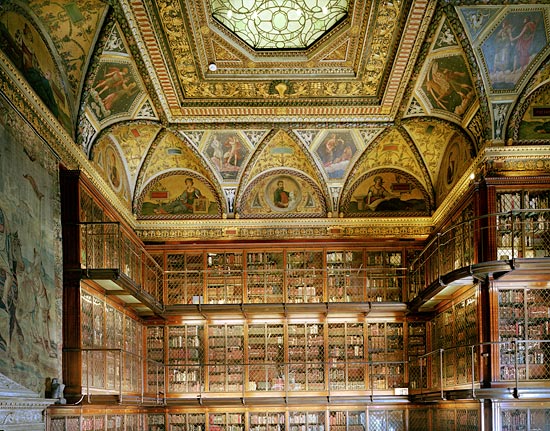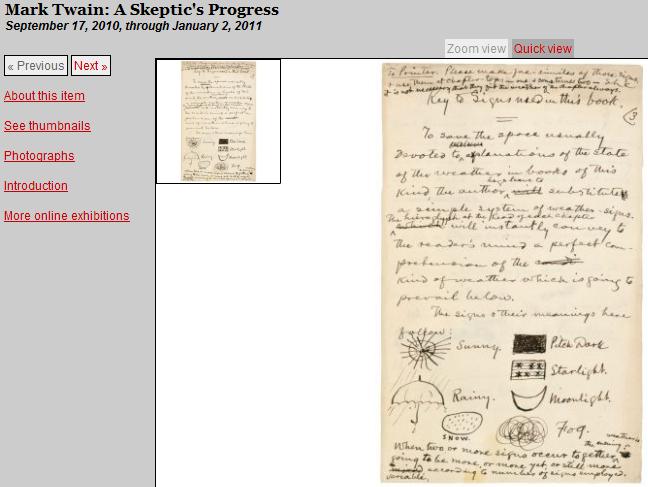
I went to the Morgan Library for the first time recently and marveled at one of the original Gutenberg bibles.
The first substantial book printed from movable type in the West transformed mass communications, as perhaps technology is doing today.
Wandering the Morgan left me thinking about creative process and legacy.
An exhibit of photos of great European libraries shows the ornate grandeur of what felt to me like cathedrals to books.
The exhibition is described:
The large-format photographs, almost five feet in width and four feet in height, dramatically capture the beauty of the libraries, which were built from the fifteenth to nineteenth centuries. They represent an array of private, public, ecclesiastical, and academic institutions. Among them are the Malatestiana Library in Cesena, Italy, which was completed in 1454 and survives in its original building with its collection and furnishings intact; the St. Gall Monastery Library in Switzerland, which is a fine example of the Rococo style; the magnificent Long Room of Trinity College Library at the University of Dublin, where the Book of Kells is kept; the Laurentian Library in Florence, which was designed by Michelangelo; and the Vatican Library’s sumptuous quarters, which were constructed between 1585 and 1590.
Morgan’s own library is a breathtaking place with that same feel. Two floors of books are housed in an elegant room with soaring ceilings, hidden stairways and artwork everywhere you look.
An exhibit on great American writer Mark Twain wasn’t about elegance and incredible wealth but instead was intended to show:
the iconic author’s manuscripts, letters, drawings, books, original illustrations for his books, and posed and candid photographs. These works convey the essence of Twain’s acerbic humor and philosophy and explore a central, recurring theme throughout his work—an uneasy, often critical, attitude toward a rapidly modernizing America.
It captivated me because of the view it gave of Twain’s creative process.

Throughout the exhibit, hand-written pages from Twain’s various works showed his strike throughs, insertions and notes to the printer.
Notes for the exhibit explained political implications of something removed, or the motivation of bankruptcy behind another set of scribbles.
Together, the photos of amazing old European libraries, Morgan’s own sumptuous library and Twain’s manuscripts got me thinking about the ephemeral nature of today’s creativity.
Decades from now, when a museum wants to do a similar exhibit about today’s great writers, what will we see from their works in progress? Once you hit “delete,” a phrase from a first draft is probably lost forever.
And who will build grand palaces to hold blogs, tweets and online photo galleries being created today?
The tradition of extravagant libraries dates back hundreds of years, ink on the page even farther. What might we lose in preserving legacy and insight going forward?

